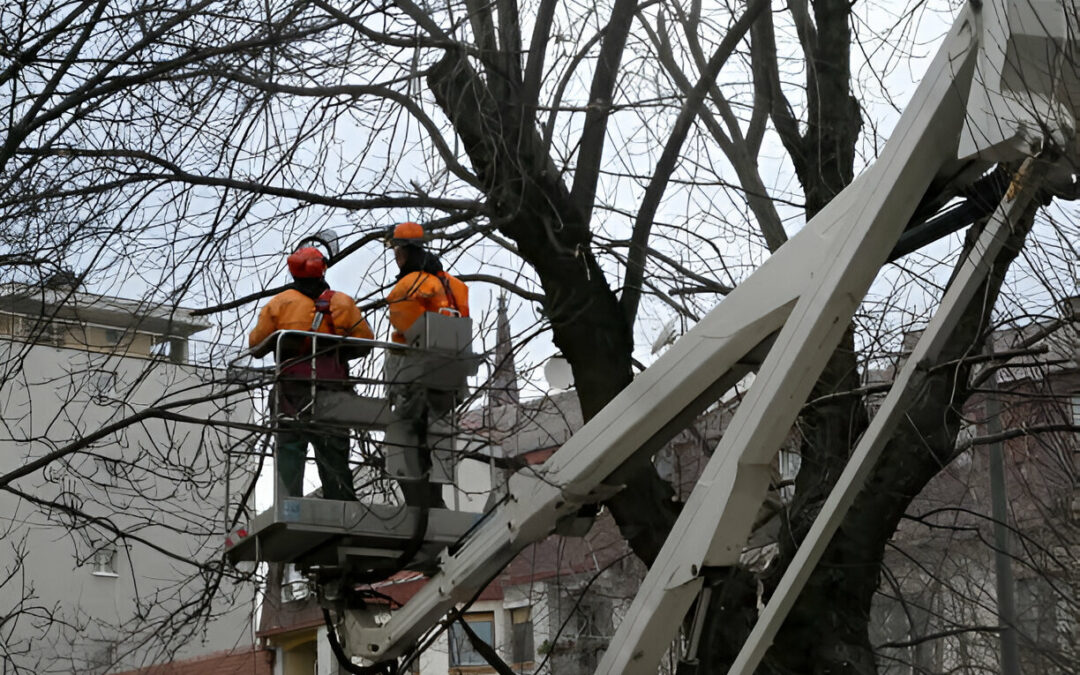Trees are vital to the landscape, but they can also become serious hazards under certain conditions. Whether due to storms, decay, or structural failure, some tree issues can’t wait for routine care—they require immediate attention.
Knowing when to call for emergency tree services can protect your home, family, and neighbors from costly or dangerous situations.
Emergency tree work isn’t just about cleanup—it’s about preventing accidents, minimizing property damage, and ensuring safety. Understanding the signs of urgent tree problems helps you act quickly and avoid larger complications.
Storm Damage and Fallen Trees
Severe weather is one of the leading causes of emergency tree situations. High winds, heavy snow, and lightning can weaken or topple trees in minutes.
- Call immediately if a tree falls on your property: This includes trees that hit your home, garage, or fences. Even partial collapses can hide dangerous structural stress.
- Look for broken or hanging limbs: Large limbs hanging in trees pose a major falling risk. They can come down unexpectedly, especially in high-traffic areas.
- Inspect leaning trees after a storm: A sudden lean or uprooted base is a warning sign. Don’t wait to see if it stabilizes—call a pro.
- Watch for cracks in the trunk or split limbs: These often occur after lightning strikes and can compromise the entire tree.
After a storm, don’t assume everything’s safe. A professional can quickly assess whether emergency removal is needed.
Trees Damaging Structures or Utilities
When trees interfere with buildings or infrastructure, it becomes more than a maintenance issue—it’s a liability.
- Call if a tree contacts power lines: This is extremely dangerous. Only certified professionals should handle trees near electrical hazards.
- Remove trees damaging roofs or siding: Overgrown limbs scraping or pressing against your home can lead to leaks and structural wear.
- Check for roots lifting pavement or foundations: Trees with invasive roots can damage walkways, driveways, and even plumbing.
- Report trees blocking driveways or entrances: Immediate removal helps maintain safe access for residents and emergency services.
Damage to utilities or structures needs urgent care to prevent service disruptions, accidents, or further property damage.
Signs of Disease or Structural Instability
A tree that looks fine one day can become a hazard the next if underlying health issues go unnoticed.
- Look for mushrooms growing at the base: This often signals internal rot and weakening. The tree may be unstable even if it looks healthy.
- Inspect for hollow trunks or deep cavities: These can collapse under their own weight, especially during wind or rain.
- Watch for trees with large dead branches: Deadwood can snap without warning. The larger the limb, the greater the risk.
- Cracks or splits in the trunk are red flags: These structural issues compromise the tree’s ability to support itself.
Diseased or decaying trees may not show outward signs until failure is imminent. A quick inspection by a tree expert can identify problems early.
Urgent Risks to People and Pets
When a tree threatens safety, time is of the essence. Emergency services help prevent injuries in public and private spaces.
- Call if a tree blocks a public walkway or road: This is a serious safety hazard and may require coordination with local authorities.
- Remove trees near playgrounds or schools with broken limbs: Children are especially vulnerable to falling debris.
- Secure trees hanging over outdoor living areas: Decks, patios, and backyards should be free of risk from unstable trees.
- Be alert to sudden changes in tree behavior: A fast lean, strange creaking, or swaying in calm weather can signal imminent collapse.
Trees that pose a threat to human or animal safety should always be treated as emergencies—don’t delay getting help.
Emergency tree services are crucial in situations involving storm damage, structural hazards, or threats to public safety. Recognizing the signs of a dangerous tree and acting quickly can prevent injury and major property loss.
Whether it’s a downed limb after a storm or a diseased trunk near your home, don’t ignore the warning signs. Contacting a professional ensures the issue is handled safely and efficiently.

